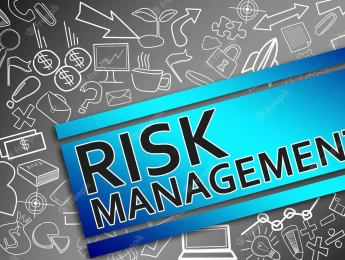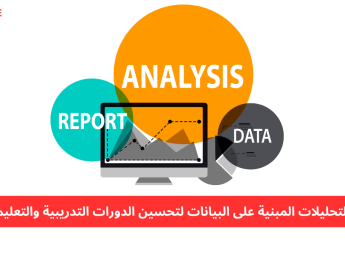- جدول المحتويات
- إعداد التقارير في بيئة العمل
- أهمية التقارير في اتخاذ القرارات الإدارية
- ما هي خطوات إنشاء تقرير احترافي وفعّال؟
- ما هي العناصر الأساسية للتقرير الاحترافي؟
- العنوان والملخص التنفيذي
- المقدمة والتعريف بالمشكلة أو الموضوع
- التحليل والمناقشة والنتائج
- التوصيات والاستنتاجات
- استخدام الأدوات التقنية لتحسين جودة التقرير
- نصائح لكتابة تقارير مؤثرة وسهلة الفهم
- استخدام لغة واضحة وبسيطة
- تجنب المصطلحات المعقدة والاختصارات المفرطة
- الحفاظ على التوازن بين التفاصيل والاختصار
- استخدام الرسوم البيانية والجداول التوضيحية
- تنظيم التقرير بشكل منطقي
- مراعاة الجمهور المستهدف
- طريقة التقييم والتحسين المستمر للتقارير
- كيفية تقييم فعالية التقرير بعد تقديمه
- استراتيجيات لتحسين التقارير في المستقبل
إعداد التقارير هو أحد المهام الأساسية في بيئات العمل الحديثة، ويعد من الأدوات الحيوية التي تستخدمها الشركات والمؤسسات لنقل المعلومات وتحليل الأداء. تقارير الأعمال، سواء كانت مالية، إدارية، أو استراتيجية، تلعب دورًا محوريًا في اتخاذ القرارات الاستراتيجية وتحقيق الأهداف التنظيمية. لكن إعداد تقرير احترافي وفعّال ليس مجرد مسألة جمع للبيانات؛ بل يتطلب منهجية دقيقة وفهمًا عميقًا لمتطلبات الجمهور المستهدف. في هذا المقال، سوف نناقش كيفية إنشاء تقارير احترافية تواكب المعايير العالمية وتحقق الأهداف المرجوة، بالإضافة إلى الأدوات والنصائح التي تجعل التقارير أكثر تأثيرًا وفائدة.
إعداد التقارير في بيئة العمل
إعداد التقارير في بيئة العمل هو عملية حيوية تهدف إلى توثيق وتحليل المعلومات والبيانات المتعلقة بالأداء والأنشطة داخل المؤسسة. يشمل إعداد التقارير جمع البيانات الدقيقة من مصادر مختلفة، مثل تقارير الأداء، النتائج المالية، أو الأنشطة اليومية، وتحليلها لتقديم صورة واضحة وموضوعية عن الوضع الحالي. يتيح إعداد التقارير للمديرين وصناع القرار اتخاذ قرارات استراتيجية مدعومة بالحقائق والبيانات الدقيقة. كما يسهم في قياس تقدم الأهداف وتقييم فعالية الخطط المعتمدة. قد تتنوع أنواع التقارير في بيئة العمل، مثل التقارير الأسبوعية، الشهرية، أو السنوية، وتختلف في الشكل والمحتوى بناءً على الهدف والجمهور المستهدف. من أهم المزايا التي يوفرها إعداد التقارير هو تعزيز الشفافية وتحسين التواصل داخل الفريق أو مع العملاء والمستثمرين. كما يساعد على تحديد نقاط القوة والضعف في العمليات الداخلية، مما يساهم في تحسين الأداء المستقبلي. ومن خلال استخدام أدوات وتقنيات حديثة في إعداد التقارير، يمكن زيادة الكفاءة وتقليل الأخطاء، مما يعزز من قدرة المؤسسة على التكيف مع التغيرات السريعة في بيئة الأعمال.
أهمية التقارير في اتخاذ القرارات الإدارية
تعتبر التقارير أداة حيوية في عملية اتخاذ القرارات الإدارية داخل المؤسسات والشركات، حيث توفر معلومات دقيقة وموثوقة تساعد المسؤولين في تقييم الوضع الحالي واتخاذ قرارات استراتيجية مدروسة. من خلال التقارير المالية، والتقارير التشغيلية، وتقارير الأداء، يحصل المديرون على رؤى شاملة حول مختلف جوانب العمل، مما يسهم في تحديد الأولويات وتوجيه الموارد بالشكل الأمثل.
تعتبر التقارير أداة قوية للتخطيط والتوجيه، حيث تمكن الإدارة من مراقبة التقدم نحو الأهداف الموضوعة، وتحديد الفجوات، ومراجعة الأداء الفعلي مقارنة مع الأهداف المحددة. كما أنها تسهم في تحسين القدرة على التنبؤ بالاتجاهات المستقبلية، مما يسمح باتخاذ إجراءات مسبقة لتفادي المشكلات المحتملة. وبفضل التقارير الدقيقة، يمكن للإدارة اتخاذ قرارات مستنيرة مدعومة بالبيانات، مما يزيد من فرص النجاح ويعزز من فعالية العمليات داخل المؤسسة.

ما هي خطوات إنشاء تقرير احترافي وفعّال؟
خطوات إنشاء تقرير احترافي وفعّال تتطلب الالتزام ببعض الخطوات المنهجية لضمان تقديم معلومات دقيقة ومقنعة بشكل منطقي ومنظم. فيما يلي تفاصيل هذه الخطوات:
- تحديد الهدف والجمهور المستهدف:
قبل البدء في إعداد التقرير، من المهم تحديد الهدف الرئيسي منه والجمهور المستهدف. هل هو تقرير مالي؟ تقني؟ أو تقرير أداء؟ تحديد الهدف يساعد في تحديد نوع البيانات التي يجب جمعها، ومستوى التفاصيل المطلوب. كما يجب أن يكون الجمهور المستهدف في ذهنك عند كتابة التقرير لضمان أن المعلومات يتم توصيلها بطريقة مفهومة وملائمة لهم. - جمع البيانات والمعلومات:
جمع البيانات هو أساس التقرير الناجح. يجب أن تكون المعلومات دقيقة وحديثة. يمكن جمعها من مصادر متعددة مثل التقارير السابقة، الدراسات، المسوحات، أو من خلال التواصل المباشر مع فرق العمل. تجنب تضمين معلومات غير دقيقة أو غير موثوقة لأنها ستؤثر على مصداقية التقرير. - تحليل البيانات وتنظيمها:
بعد جمع البيانات، يتم تحليلها لتحديد الأنماط أو النقاط المهمة. تحتاج إلى أن تكون قادرًا على تفسير هذه البيانات بشكل صحيح واستخلاص المعاني منها. يفضل تنظيم البيانات في جداول أو رسوم بيانية لتوضيح النتائج بشكل أفضل. - كتابة التقرير بشكل منظم:
ابدأ بالتقرير بعرض المقدمة التي تحدد الغرض من التقرير. ثم قم بتقسيم التقرير إلى الفصول أو الأقسام المختلفة، مثل خلفية الموضوع، تحليل البيانات، النتائج، وأخيرًا التوصيات.النتائج هي القسم الأساسي الذي يتضمن تفسير البيانات، في حين أن التوصيات تقدم الحلول أو الاقتراحات بناءً على النتائج التي تم الوصول إليها. - التأكد من التنسيق والوضوح:
يجب أن يكون التنسيق موحدًا وواضحًا. استخدم العناوين الجانبية (H2وH3)لتقسيم المحتوى، وتجنب الفقرات الطويلة التي قد تُصعب الفهم. يمكن استخدام النقاط أو الجداول لتوضيح المعلومات بشكل أفضل. تأكد أيضًا من أن الخطوط قابلة للقراءة وأن الصور أو الرسوم البيانية ذات جودة عالية. - مراجعة وتدقيق التقرير:
بعد كتابة التقرير، من الضروري مراجعته للتأكد من دقته وخلوه من الأخطاء الإملائية والنحوية. تأكد من أن المعلومات منطقية ومتسلسلة بشكل جيد، وأن كل جزء من التقرير يتماشى مع الهدف العام. - إضافة المراجع والمصادر:
في حال تم استخدام مصادر خارجية أو دراسات مرجعية، يجب تضمين المراجع في نهاية التقرير بشكل صحيح وفقًا للأدلة المقررة في مجال عملكمثل أسلوبAPAأوMLA - تقديم التقرير:
عند الانتهاء من التقرير، يجب تقديمه بشكل مناسب للجمهور المستهدف. يمكن أن يكون ذلك عبر البريد الإلكتروني، أو من خلال عرض تقديمي، أو حتى من خلال نشره على منصة داخلية إذا كان التقرير موجهًا لفريق العمل. تأكد من إرفاق أي مستندات أو جداول إضافية إذا كانت ضرورية.
ما هي العناصر الأساسية للتقرير الاحترافي؟
العنوان والملخص التنفيذي
يعتبر العنوان أحد العناصر الأساسية التي تحدد طبيعة محتوى التقرير، حيث يجب أن يكون واضحًا ومباشرًا. أما الملخص التنفيذي، فيعكس باختصار محتوى التقرير بالكامل، ويُعد بمثابة نظرة عامة للقارئ حول الموضوع، والأهداف، والنتائج الرئيسية التي سيتم التطرق إليها في التقرير.
المقدمة والتعريف بالمشكلة أو الموضوع
تعد المقدمة خطوة مهمة حيث تُعرّف القارئ بالموضوع وتوضح خلفية التقرير. يتعين في هذه الفقرة تحديد القضية أو المشكلة التي يتناولها التقرير، بالإضافة إلى تقديم معلومات أساسية أو سياق يساعد القارئ في فهم أهمية الموضوع ودوافع إجراء التحليل.
التحليل والمناقشة والنتائج
يجب أن يحتوي هذا القسم على التفاصيل الدقيقة للتحليل المنهجي للموضوع. يشمل ذلك جمع البيانات، تطبيق الأساليب المناسبة في تحليل المعلومات، ومناقشة النتائج المستخلصة من التحليل. يتم تقديم الأدلة والنتائج التي تدعم الافتراضات أو الإجابات على الأسئلة التي طرحت في التقرير.
التوصيات والاستنتاجات
في هذا الجزء، يتم تلخيص النقاط الرئيسية والتوصل إلى استنتاجات بناءً على التحليل. تُعرض التوصيات التي تهدف إلى تحسين أو معالجة المشاكل التي تم تحديدها في التقرير. من المهم أن تكون التوصيات قابلة للتنفيذ، ومبنية على الأدلة التي تم جمعها طوال التقرير.
استخدام الأدوات التقنية لتحسين جودة التقرير
استخدام الأدوات التقنية لتحسين جودة التقرير يعد خطوة حاسمة في تحسين الكفاءة والفعالية عند إعداد التقارير. من خلال الأدوات الحديثة والتقنيات المتطورة، يمكن تحسين الدقة والسرعة والوضوح، مما يساهم في جعل التقارير أكثر احترافية وجاذبية. إليك كيفية استخدام الأدوات التقنية لتحقيق ذلك:
- استخدام برامج معالجة النصوص المتقدمة (مثل Microsoft Wordأو Google Docs):
توفر هذه الأدوات إمكانيات واسعة من التنسيق التلقائي والتنظيم، مثل القوائم المنسدلة، العناوين التلقائية، والفهارس. كما يمكن استخدام التدقيق اللغوي التلقائي للتأكد من أن التقرير خالٍ من الأخطاء الإملائية والنحوية. كذلك، يمكن إضافة المراجع والمصادر بسهولة. - الرسوم البيانية والتحليل البياني باستخدام برامج مثل Excelأو Google Sheets:
تساعد هذه الأدوات في إنشاء الرسوم البيانية والجداول التي تسهل تفسير البيانات وتوضيحها بشكل مرئي. يمكن استخدام التحليل البياني المتقدم لاستخراج الأنماط والاتجاهات من البيانات، مما يجعل النتائج أكثر وضوحًا ويعزز فهم القارئ. - استخدام أدوات التصميم مثل Canvaأو Adobe InDesign:
لتقديم تقرير بشكل مرئي جذاب، يمكن الاستفادة من أدوات التصميم مثلCanvaأوAdobe InDesign.هذه الأدوات تسمح بإنشاء تصاميم احترافية للتقارير باستخدام القوالب المتاحة، مما يجعل التقرير أكثر تميزًا وجاذبية. - الأدوات المساعدة في التعاون مثل Google DriveوTrello:
عند العمل على التقرير بشكل جماعي، توفر أدوات مثلGoogle DriveوTrelloإمكانيات التعاون في الوقت الفعلي، حيث يمكن للفرق تعديل التقرير معًا، ومتابعة التقدم في المهام، وتنظيم العمل بشكل فعال. هذا يعزز التنسيق بين أعضاء الفريق ويسهم في تقديم تقرير عالي الجودة في وقت قصير. - أدوات التحليل التنبؤي مثل Power BIأو Tableau:
يمكن الاستفادة من أدوات التحليل التنبؤي مثلPower BIأوTableauلتحليل البيانات بشكل أعمق واستخلاص رؤى مفيدة تساهم في تحسين التقرير. تتيح هذه الأدوات إمكانية إنشاء لوحات تحكم تفاعلية وتقديم تحليلات مرئية تسهل على القارئ فهم المعلومات المعقدة. - استخدام أدوات أتمتة التقارير مثل Zoho Analyticsأو ReportGarden:
تساعد هذه الأدوات في أتمتة عملية إنشاء التقارير على أساس البيانات المجمعة بشكل دوري. يمكن تخصيص التقارير لعرض البيانات تلقائيًا على فترات زمنية معينة، مما يوفر الوقت ويسمح بالحصول على تقارير دقيقة دون الحاجة لتحديثها يدويًا. - استخدام تقنيات الذكاء الاصطناعي مثل GrammarlyوHemingway:
يمكن استخدام أدوات الذكاء الاصطناعي مثلGrammarlyوHemingwayلتحسين جودة الكتابة بشكل كبير. هذه الأدوات تقوم بتصحيح الأخطاء اللغوية، تقديم اقتراحات لتحسين الأسلوب، وتوفير نصائح لجعل التقرير أكثر وضوحًا واحترافية.
نصائح لكتابة تقارير مؤثرة وسهلة الفهم
استخدام لغة واضحة وبسيطة
تعد اللغة الواضحة من أهم عوامل نجاح التقرير، حيث يجب أن تكون خالية من الغموض. يجب تجنب استخدام الكلمات المعقدة أو العبارات التي قد تربك القارئ، وبدلاً من ذلك يجب استخدام جمل قصيرة وسهلة. اختيار المفردات المناسبة يسهم في إيصال المعلومات بشكل سلس وسريع، مما يعزز من قدرة التقرير على التأثير.
تجنب المصطلحات المعقدة والاختصارات المفرطة
من الضروري تجنب إدخال مصطلحات فنية معقدة أو اختصارات غير مفهومة للقارئ العام. قد تكون بعض المصطلحات مهمة في سياقات معينة، ولكن يجب توضيحها عند استخدامها أو تزويد القارئ بشرح بسيط. كذلك، الاختصارات المفرطة قد تخلق لبسًا، لذلك يجب استخدام تلك التي يعرفها القارئ بشكل شائع أو تفسيرها عند استخدامها لأول مرة.
الحفاظ على التوازن بين التفاصيل والاختصار
من المهم أن يتضمن التقرير المعلومات الضرورية فقط دون إغراق القارئ بالتفاصيل الدقيقة التي قد تشتت الانتباه. بينما يجب تقديم التفاصيل الدقيقة لتحليل النتائج، ينبغي أيضًا الحرص على تقديم المحتوى بشكل مختصر، مما يسهل على القارئ فهم الأفكار الرئيسية دون الإحساس بالإرهاق.
استخدام الرسوم البيانية والجداول التوضيحية
إضافة الرسوم البيانية والجداول إلى التقرير يمكن أن يساعد في تبسيط البيانات المعقدة وتوضيح العلاقات بين المعلومات بشكل مرئي. كما أن هذه الأدوات تسهم في تسريع فهم القارئ وتقديم المعلومات بطريقة أكثر جذبًا وتركيزًا. ينبغي أن تكون هذه الرسوم واضحة وسهلة الفهم دون تعقيد.
تنظيم التقرير بشكل منطقي
من الضروري تنظيم التقرير بطريقة منطقية وسلسة تبدأ من تقديم الفكرة الرئيسية ثم التطرق إلى التحليل والمناقشة وصولاً إلى الاستنتاجات. يمكن تقسيم التقرير إلى أقسام فرعية واضحة، مما يساعد القارئ على متابعة النقاط الرئيسية بسهولة. الترتيب المنظم يعزز من فعالية التقرير ويسهل الوصول إلى المعلومات.
مراعاة الجمهور المستهدف
عند كتابة التقرير، يجب أن تؤخذ في الاعتبار خلفية الجمهور المستهدف ومستوى معرفتهم بالموضوع. حيث يجب تعديل الأسلوب والمحتوى بما يتناسب مع نوع القارئ، سواء كان مختصًا في المجال أو ليس لديه خلفية علمية. هذا يساعد في توصيل الرسالة بفعالية أكبر ويزيد من تأثير التقرير.

طريقة التقييم والتحسين المستمر للتقارير
التقييم والتحسين المستمر للتقارير هو عملية حيوية تضمن أن التقارير لا تظل ثابتة بل يتم تطويرها بشكل مستمر لتلبية احتياجات الجمهور وتحقيق أهداف المؤسسة. إليك كيفية تقييم فعالية التقرير واستراتيجيات لتحسينه في المستقبل:
كيفية تقييم فعالية التقرير بعد تقديمه
- مراجعة ردود الفعل من الجمهور المستهدف:
بعد تقديم التقرير، من الضروري جمع التعليقات والآراء من القراء أو أصحاب القرار الذين اطلعوا على التقرير. يمكن أن تشمل هذه التعليقات ملاحظات حول وضوح المعلومات، التنظيم، ومدى فاعلية النتائج والتوصيات. يُفضل أن يتم إجراء استطلاعات أو جلسات مناقشة لفهم النقاط التي تم التغاضي عنها أو التي لم تلبِ توقعات الجمهور. - مقارنة الأهداف مع النتائج:
يجب مقارنة أهداف التقرير مع النتائج الفعلية التي تم تحقيقها. هل نجح التقرير في نقل الرسالة المطلوبة؟ هل تم تحقيق الغرض الرئيسي من التقرير؟ على سبيل المثال، إذا كان الهدف من التقرير هو اتخاذ قرار استثماري، فهل ساهم التقرير فعلاً في توجيه القرار؟ تحليل هذه النقاط يساعد في تقييم ما إذا كان التقرير قد حقق تأثيره بشكل فعّال. - مراجعة مدى دقة البيانات والتحليل:
من المهم أيضًا التأكد من أن البيانات المستخدمة في التقرير دقيقة وأن التحليل كان صحيحًا. إذا تم الكشف عن أخطاء أو نقاط غموض في البيانات، فقد يكون ذلك إشارة إلى وجود ثغرات في عملية جمع وتحليل البيانات. يمكن إجراء مراجعات داخلية للتحقق من صحة المعلومات المقدمة. - تقييم وقت استجابة التقرير:
تقييم الوقت الذي استغرقه التقرير في إتمامه مقارنة بالجدول الزمني المحدد له يساعد في فهم فعالية إدارة الوقت في إعداد التقرير. هل كان التقرير جاهزًا في الوقت المناسب؟ إذا كانت هناك تأخيرات، ما هي الأسباب؟ - تحليل تأثير التقرير على اتخاذ القرارات:
يمكن أيضًا تقييم تأثير التقرير من خلال النظر في كيفية تأثيره على اتخاذ القرارات. هل تم تنفيذ التوصيات والاقتراحات الواردة في التقرير؟ مدى تأثير التقرير على العملية اتخاذ القرار يعد مقياسًا لفعاليته.
استراتيجيات لتحسين التقارير في المستقبل
- تحليل التغذية الراجعة واستخدامها لتحسين المحتوى:
استنادًا إلى ملاحظات الجمهور، يمكن تعديل محتوى التقرير في المستقبل ليكون أكثر وضوحًا وملاءمة.على سبيل المثال، إذا كانت هناك شكاوى حول اللغة التقنية المعقدة أو نقص التفاصيل المهمة، يمكن تجنب هذه المشكلات في التقارير القادمة من خلال استخدام لغة أبسط أو إضافة المزيد من الأمثلة والتوضيحات. - تحديث أسلوب العرض والتنسيق:
قد تتغير تفضيلات الجمهور مع مرور الوقت، لذا من المهم تحديث أسلوب العرض. يمكن استخدام تصميمات أكثر حداثة، مثل الجداول التفاعلية أو الرسوم البيانية المتقدمة، لتقديم المعلومات بشكل أكثر جذبًا ووضوحًا. أيضًا، يمكن تبني التقنيات الحديثة مثل الرسوم البيانية التفاعلية أو أدوات التحليل البياني المتقدمة لتحسين تجربة القارئ. - اعتماد أدوات تحليل البيانات المتقدمة:
للاستفادة من البيانات الدقيقة في التقارير المستقبلية، يمكن استخدام أدوات تحليل بيانات متطورة مثلPower BIأوTableau.هذه الأدوات توفر تحليلًا عميقًا للبيانات وتساعد في اكتشاف الأنماط والتوجهات التي قد لا تكون ظاهرة بشكل واضح في التقارير التقليدية.التحليل المتقدم يمكن أن يعزز دقة وصحة التقرير. - زيادة التفاعل والشفافية:
لتحسين التفاعل مع التقرير، يمكن إضافة أسئلة وأجوبة أو جلسات تفاعلية عبر الإنترنت لمناقشة محتوى التقرير مع الجمهور المستهدف. كما يجب العمل على زيادة الشفافية في التقارير من خلال إضافة مزيد من التفاصيل حول البيانات المستخدمة وطرق التحليل المتبعة. - تحسين عمليات جمع البيانات:
في المستقبل، يجب تحسين عملية جمع البيانات لضمان أن تكون أكثر دقة و شمولية.يمكن استخدام أدوات وتقنيات أتمتة جمع البيانات مثل الاستطلاعات الإلكترونية أو أدوات التتبع لتحسين كفاءة جمع البيانات. - إعداد تقارير مرنة وقابلة للتخصيص:
بدلاً من تقارير ثابتة، يمكن النظر في إعداد تقارير قابلة للتخصيص وفقًا لاحتياجات المستفيدين المختلفين. من خلال جعل التقارير أكثر مرونة، يمكن تلبيتها لاحتياجات جماهير مختلفة، مثل فرق العمل الداخلية أو أصحاب المصلحة الخارجيين.
إعداد تقارير احترافية وفعّالة يتطلب الجمع بين المهارات التقنية والإبداعية، والتأكد من أن المعلومات المقدمة واضحة، دقيقة، وسهلة الفهم. من خلال اتباع المبادئ الأساسية للتقارير، مثل التنظيم الجيد، استخدام اللغة المناسبة، والتحليل المتعمق، يمكن لأي شخص تطوير تقارير تلبي احتياجات المؤسسة وتدعم اتخاذ القرارات. في النهاية، التقرير الجيد لا يعد فقط وسيلة لعرض البيانات، بل هو أداة قوية تسهم في تحسين الأداء وزيادة فعالية الأعمال.






















